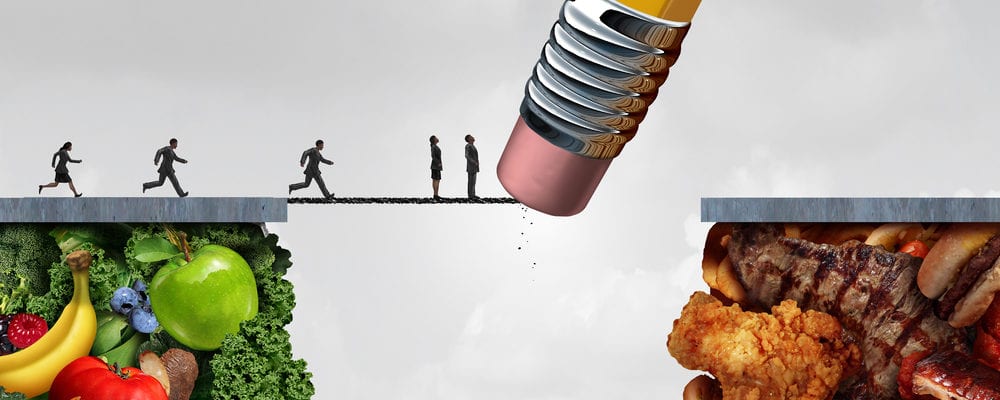
How To Manage Hunger and Cravings – Practical Tips [Guide]
Table of Contents:
Last Updated on March 21, 2024
Have you ever stood in front of your fridge, craving something you know you shouldn’t eat, or felt hunger pangs that seemed more emotional than physical?
Understanding and managing hunger and cravings can feel like navigating a complex maze, especially when striving for a healthy lifestyle or maintaining weight loss goals.
From integrating protein in every meal to staying hydrated and planning ahead, these insights can empower you to take control of your cravings and develop a healthier relationship with food.
Because this article offers practical strategies from personal experience to manage hunger and cravings effectively, it’s essential reading for anyone looking to make informed choices about their eating habits and improve their overall well-being.
What is a Craving?
A craving is essentially a strong desire for food driven by psychological factors, often linked to emotional states, both positive and negative. While emotions like stress or sadness can trigger cravings, so can feelings of happiness or excitement. Regularly succumbing to these cravings may hinder weight loss efforts and affect overall health.
Differentiating Between Hunger and Cravings
Understanding the distinction between hunger and cravings is crucial for anyone looking to manage their dietary habits more effectively.
Hunger is the body’s physical need for food, while cravings are a psychological desire for specific types of foods.
To complicate matters, there’s also a concept known as hedonic hunger, which refers to the desire for palatable foods that give sensory pleasure, regardless of physical hunger signals.
Recognizing these differences can help in making more mindful eating choices and in controlling dietary intake. Here, we break down these concepts further and provide a structured comparison for clarity.
| Aspect | Hunger | Cravings | Hedonic Hunger |
|---|---|---|---|
| Definition | A physical need for food to satisfy energy requirements. | A specific and intense desire for a particular type of food. | A desire for the pleasure and satisfaction food provides. |
| Trigger | Usually triggered by the body’s need for nutrients. | Often triggered by emotional factors or specific conditions. | Triggered by the sight, smell, or thought of palatable food. |
| Type of Desire | General need for any food that can provide energy. | Specific foods, often high in sugar or fat. | Palatable, enjoyable foods, not driven by energy needs. |
| Satiety | Eating any nutritious food can satisfy hunger. | Satisfying a craving requires consuming the specific desired food. | Eating palatable foods satisfies this desire, not hunger. |
| Duration | Persists until the physical need for food is met. | Can be fleeting and may pass if not acted upon. | Can persist in the presence of palatable foods. |
Understanding these differences is not just about making healthier food choices; it’s about recognizing the body’s cues and the mind’s desires, allowing for a balanced approach to eating. By identifying whether you’re experiencing hunger, a craving, or hedonic hunger, you can decide how to respond in a way that aligns with your health and wellness goals.
Causes of Food Cravings
Food cravings are a common experience, often leading us toward specific types of foods, such as those high in sugar or fat. Understanding what triggers these cravings is key to managing them effectively. The causes of food cravings are multifaceted, encompassing physiological, psychological, and environmental factors. Here, we delve into some of the primary triggers:
- Stress: When stressed, your body produces higher levels of cortisol, a hormone that can increase appetite and specifically enhance cravings for comfort foods that are high in sugar and fat.
- Hormonal Fluctuations: Hormones play a significant role in cravings. For example, fluctuations in estrogen and progesterone during menstrual cycles can increase cravings for carbohydrates and sweets. Similarly, the hormone leptin, which regulates hunger, can influence cravings when its levels are imbalanced.
- Nutrient Deficiencies: Sometimes, cravings can be a sign of specific nutrient deficiencies. For instance, a craving for chocolate may indicate a magnesium deficiency, while craving red meat might suggest a need for more iron.
- Emotional Distress: Emotions deeply influence eating behaviors. Boredom, sadness, loneliness, or even happiness can trigger cravings as a way to seek emotional comfort or reward through food.
- Sensory Stimuli: Visual cues, smells, and even sounds (like the crackle of frying) can trigger cravings for specific foods. This is why seeing a food advertisement can suddenly make you crave that food, even if you weren’t hungry before.
- Dehydration: Sometimes, the body confuses thirst with hunger, leading to cravings. Drinking water may help alleviate this type of craving by addressing the underlying thirst.
- Lack of Sleep: Insufficient sleep affects the hormones that regulate hunger, ghrelin, and leptin, leading to increased appetite and cravings for energy-dense foods.
Understanding these triggers offers the first step in managing cravings.
Tips On Managing Your Hunger And Cravings
Below, I share some practical tips and strategies that have helped me and many others manage hunger effectively and distinguish between true hunger and emotional cravings.
Adopt Regular Eating Schedules:
Eating at regular intervals prevents extreme hunger, making it easier to choose healthy foods and resist cravings. Integrating scheduled meals and snacks into your daily routine is key to maintaining balanced energy levels and avoiding impulsive eating.
Incorporate Protein in Every Meal:
Including a sufficient amount of protein (2-3 oz) in your meals can significantly enhance satiety, helping to keep hunger at bay and manage appetite more effectively.
Prioritize Food Quality:
Choosing minimally processed foods rich in antioxidants, nutrients, and fiber not only supports fullness but also boosts overall health and energy levels.
Plan Your Meals in Advance:
Pre-planning meals ensures that you eat regularly, control portion sizes, and stick to your nutritional goals. Keeping healthy options readily available reduces the temptation to indulge in less nutritious choices.
Ensure Balanced Meals:
While protein is crucial, it’s also important to include healthy fats (such as nuts, olive oil, and nut butters), vegetables, and healthy carbohydrates (like fruits and whole grains) in your diet for a well-rounded nutritional profile.
Stay Hydrated:
Adequate hydration is essential for managing hunger and cravings. Often, thirst can masquerade as hunger, so aiming for 1.5 – 2 liters of fluids daily can help keep unnecessary hunger pangs at check.
Mind Your Environment
Surrounding yourself with healthy food choices, both at home and work, and keeping “crave foods” out of reach, can significantly reduce the likelihood of giving into cravings.
Use the above tips to help keep hunger and cravings at bay. If cravings do occur, try pausing and asking yourself if you are physically hungry or emotionally hungry.
If your answer is emotional hunger, try using distraction with activities that are incompatible with eating, such as going for a walk, working in the garden, painting your nails, or cleaning the house.
To learn more about managing your hunger after bariatric surgery, have a look at our blog post on 11 Mindful Eating Practical Tips & Advanced Strategies – “How Bariatric Surgery Changes Your Hunger, Metabolism And Even Your Tastes For Certain Foods.”
Helpful Resources
- https://www.healthline.com/nutrition/ways-reduce-hunger-appetite
- https://www.mayoclinic.org/healthy-lifestyle/weight-loss/in-depth/weight-loss/art-20047342
- https://www.livescience.com/54248-controlling-your-hunger.html
- https://www.pennmedicine.org/updates/blogs/metabolic-and-bariatric-surgery-blog/2019/july/how-to-stop-food-cravings






